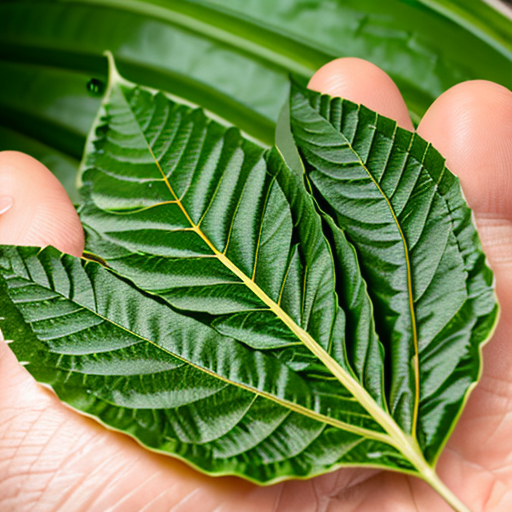Kratom, a tropical plant indigenous to Southeast Asia, has garnered significant attention in recent years due to its potential advantages in assisting individuals grappling with opiate addiction. This article aims to extensively explore the potential role of kratom in supporting those seeking recovery from opiate dependency. While further investigation is required to comprehensively understand its mechanisms and effectiveness, a multitude of firsthand accounts and preliminary studies suggest that kratom may present promising opportunities as a tool in the treatment of opiate addiction.
Overview of Opiate Addiction and Current Therapies:
Opiate addiction is an alarming public health concern with dire consequences for both individuals and society as a whole. Conventional approaches to opiate addiction treatment often involve the utilization of medications such as methadone or buprenorphine. These medications function by activating opiate receptors, thereby diminishing cravings and alleviating withdrawal symptoms. While these medications have demonstrated efficacy for a considerable number of individuals, they are not without their own challenges, including potential side effects and the necessity for prolonged utilization.

Can kratom help with opiate addiction?
The Potential Advantages of Kratom:
Kratom encompasses a rich array of alkaloids, including mitragynine and 7-hydroxymitragynine, which interact with the opioid receptors in the brain. However, kratom’s interaction with these receptors differs from that of traditional opioids. Advocates of kratom posit that its potential benefits lie in its capacity to mitigate withdrawal symptoms, diminish cravings, and provide a more natural alternative for individuals seeking recovery from opiate addiction.
Anecdotal Evidence and User Testimonials:
Although scientific research on the effectiveness of kratom in treating opiate addiction is limited, there exists an ever-expanding body of anecdotal evidence and user testimonials that highlight its potential advantages. A multitude of individuals who have grappled with opiate addiction have reported incorporating kratom into their recovery journey as a means to manage withdrawal symptoms and cravings. These individuals describe a notable decrease in physical discomfort, an improved mood, and an overall sense of well-being when utilizing kratom.
Preliminary Research Findings:
While the body of research on kratom’s potential in aiding opiate addiction is still in its early stages, a number of preliminary studies have begun to explore its effects. Research conducted thus far indicates that kratom may interact with the same brain receptors as traditional opioids but with a more nuanced and balanced effect. It is believed that kratom’s unique interaction with opioid receptors can contribute to managing withdrawal symptoms and reducing cravings, all without inducing the same level of euphoria or respiratory depression associated with conventional opioids.
For instance, a preliminary study conducted on a small sample of individuals recovering from opiate addiction found that those who incorporated kratom into their treatment regimen experienced a significant reduction in withdrawal symptoms and reported a decrease in opiate cravings. These findings provide initial evidence supporting the potential therapeutic use of kratom as an adjunct in opiate addiction recovery.
In addition to exploring the potential role of kratom in opiate addiction recovery, it is important to briefly discuss the various types or strains of kratom that are available. Kratom strains are typically categorized based on the color of the veins on the leaves, which can vary from red, green, and white. Each strain is believed to possess distinct properties and effects, although the scientific research in this area is limited.
Red Vein Kratom: Red vein kratom is often associated with a calming and sedating effect. It is commonly used for relaxation, pain relief, and as a sleep aid. Some individuals recovering from opiate addiction have reported using red vein kratom to alleviate withdrawal symptoms, promote relaxation, and reduce anxiety.
Example: A person undergoing opiate withdrawal may find relief by using red vein kratom to manage their symptoms and promote a sense of relaxation and calmness during the recovery process.
Green Vein Kratom: Green vein kratom is typically associated with a more balanced effect, offering both stimulating and relaxing properties. It is often used for enhancing focus, boosting energy, and promoting a positive mood. Some individuals in recovery have found green vein kratom helpful in managing the fatigue and lack of motivation that can accompany opiate withdrawal.
Example: An individual recovering from opiate addiction may use green vein kratom to increase their energy levels and improve their focus during the recovery process, which can aid in maintaining productivity and a positive mindset.
White Vein Kratom: White vein kratom is commonly known for its stimulating and energizing properties. It is often used to increase alertness, enhance cognitive function, and improve mood. While white vein kratom may not be as commonly used during opiate withdrawal due to its stimulating effects, some individuals in recovery have reported using it to combat the lethargy and mental fog that can occur during the withdrawal phase.
Example: A person experiencing fatigue and lack of focus during opiate withdrawal may find relief by using white vein kratom to increase their energy levels and improve mental clarity, enabling them to engage in daily activities and maintain a positive outlook.
It is important to note that individual responses to kratom strains can vary, and finding the most suitable strain and dosage should be done with caution and under the guidance of healthcare professionals or addiction specialists. Additionally, the effects of kratom can be influenced by various factors, including the quality and potency of the product, an individual’s tolerance, and their specific physiological and psychological needs.